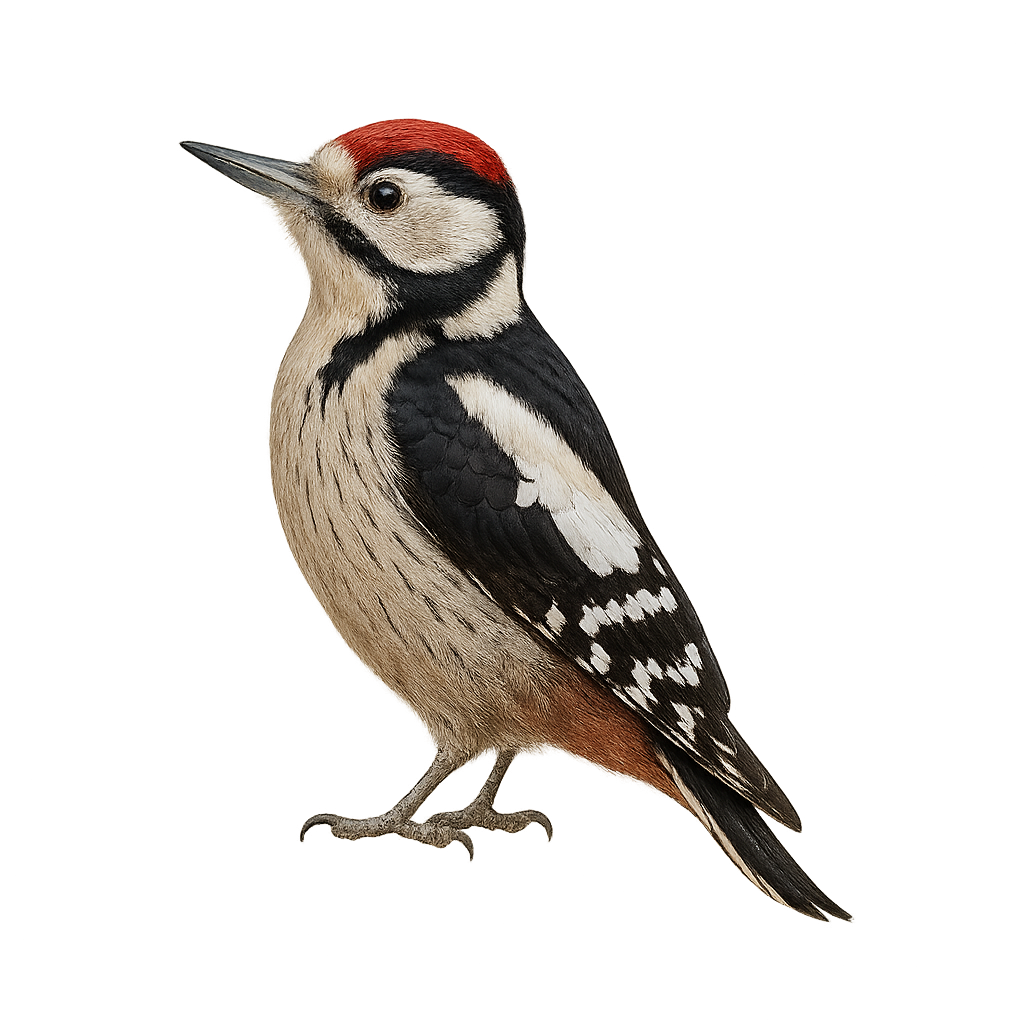Your wildlife photography guide.
Explore the lesser spotted woodpecker in detail, study its behavior, prepare your shots.
Where to observe and photograph the lesser spotted woodpecker in the wild
Learn where and when to spot the lesser spotted woodpecker in the wild, how to identify the species based on distinctive features, and what natural environments it inhabits. The WildlifePhotographer app offers tailored photography tips that reflect the lesser spotted woodpecker’s behavior, helping you capture better wildlife images. Explore the full species profile for key information including description, habitat, active periods, and approach techniques.
Lesser Spotted Woodpecker
Scientific name: Dryobates minor

IUCN Status: Least Concern
Family: PICIDAE
Group: Birds
Sensitivity to human approach: Suspicious
Minimum approach distance: 20 m
Courtship display: March to April
Incubation: 11-14 jours
Hatchings: April to May
Habitat:
Forests and woodlands
Activity period :
Primarily active during the day, with peak activity in the morning and late afternoon.
Identification and description:
The Lesser Spotted Woodpecker is a small bird from the woodpecker family, primarily found in deciduous and mixed forests of Europe and Asia. It measures about 20 cm in length, with a wingspan of 30 to 35 cm, and weighs between 30 and 40 g. Its plumage is mainly black and white, with a small red patch on the nape, visible mostly in males. The Lesser Spotted Woodpecker is distinguished by its smaller size compared to the Great Spotted Woodpecker and its foraging habits. It primarily feeds on small insects found under the bark of trees, using its beak to strike quickly and its long tongue to extract the insects. It is an excellent climber and spends much of its time in trees. Although its population remains stable, this species may be affected by habitat loss due to deforestation.
Recommended lens:
400 mm – adjust based on distance, desired framing (portrait or habitat), and approach conditions.
Photography tips:
Approach slowly and discreetly: The Lesser Spotted Woodpecker is a shy bird, often more difficult to spot and sensitive to disturbances.
Photograph early in the morning or late in the day, when the light is softer and the woodpecker is more active in its search for food.
Capture its foraging moments: This woodpecker uses its beak to drill into tree bark in search of small insects. Take advantage of these moments to capture its unique behavior.
Be patient: The Lesser Spotted Woodpecker is more often seen on tree trunks or in wooded areas. Wait quietly for it to settle in a good position for a natural shot.
The Lesser Spotted Woodpecker is a vulnerable species, especially due to the loss of its forest habitat. It is important to respect its natural environment and not disturb its nesting or foraging sites. Follow local conservation recommendations to protect this rare and fragile species.
The WildlifePhotographer App is coming soon!
Be the first to explore the best nature spots, track rutting seasons, log your observations, and observe more wildlife.
Already 1 450 wildlife lovers subscribed worldwide

